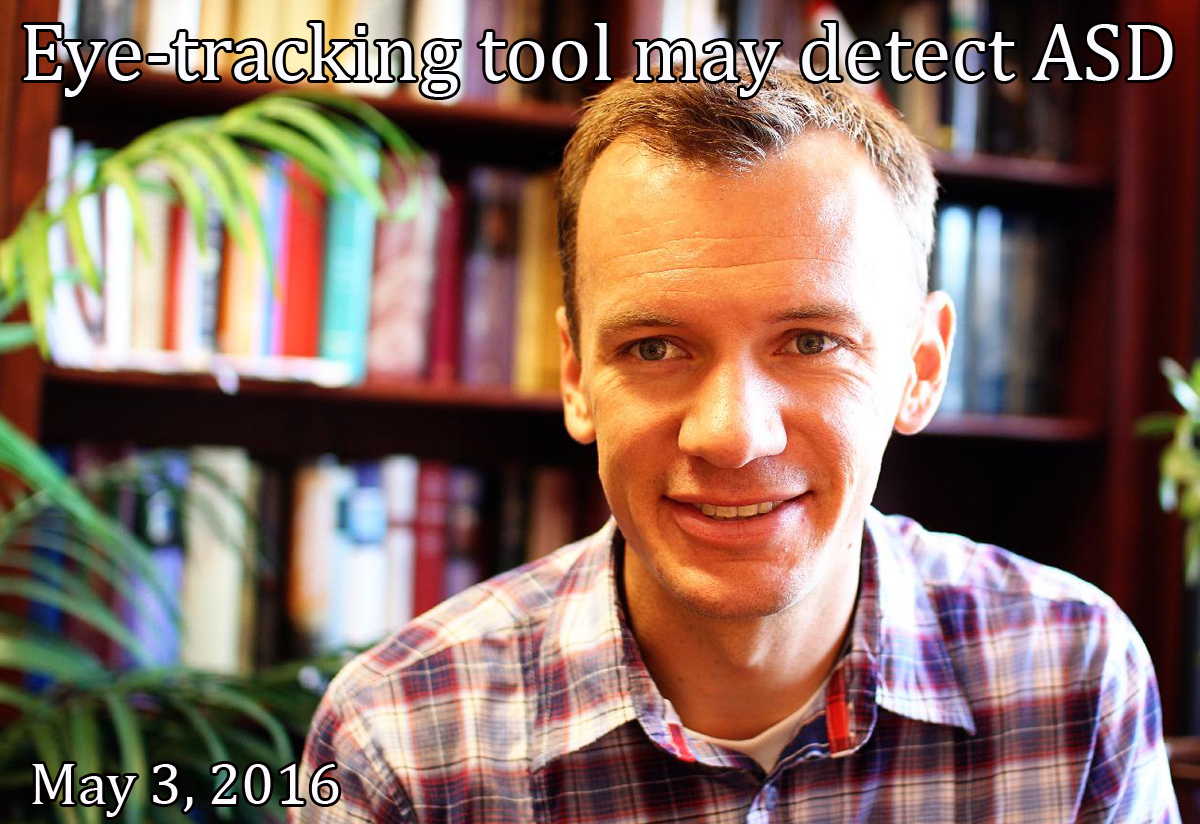Check out other stories from the Latest News
Eye-Tracking Tool May Detect ASD in Adults
By Chelsea E. Toledo, M.A. on May 3, 2016

Background: Autism spectrum disorder (ASD) is characterized by differences in communication, social interaction and behavior. A key indicator for ASD in infants and toddlers is abnormal gaze, as people with ASD tend to focus on different objects or movements than their typically developing peers. For example, someone with ASD would be less likely to make eye contact with another person as he or she spoke.
What’s New: On March 23, 2016, the journal Molecular Autism explored the use of an eye-tracking system called Gazefinder, which was developed to detect ASD in toddlers. The researchers showed scenes from movies to a study group of 26 males with ASD between the ages of 15 and 41 and a comparable group of individuals with typical development. Measuring the time participants’ eyes were fixated on a particular object or motion, researchers found that the ASD group spent significantly less time focused on socially significant objects or movements. For example, when looking at the face of a person sitting silently, the ASD group was more likely to focus on the mouth, as opposed to the typically developing group, who focused on the eyes.
Why it’s important: Atypical gaze is already a screening indicator for ASD in infants and toddlers. However, this study provided a concrete measure to distinguish much older people with ASD from their typically developing peers. Future research could explore the efficacy of this technique in females and in older children.
Help me understand :
| Source(s) : |
| Tweet |

